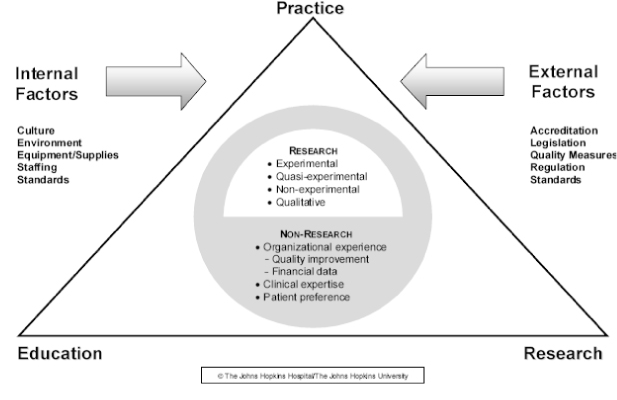J Korean Acad Nurs Adm.
2013 Jan;19(1):87-94.
Development of Nursing Practice Guidelines for Non-humidified Low Flow Oxygen Therapy by Nasal Cannula
- Affiliations
-
- 1Ajou Medical Center, Korea. withmimi@ajou.ac.kr
Abstract
- PURPOSE
The purpose of this study was to provide a basis for non-humidified low flow oxygen by nasal cannula and to provide a guide for consistent care in nursing practice.
METHODS
A methodological study on the development of guidelines with experts' opinions on collected items, framing PICO questions, evaluating and synthesizing texts which were searched with the key words (low flow oxygen, nasal cannula, humidification of oxygen, guideline) from web search engines.
RESULTS
Of the 45 researched texts on the web, 9 texts relevant to the theme were synthesized and evaluated. All patients with humidified or non-humidified oxygen therapy reported that they had no discomfort.
CONCLUSION
The results indicate that there are no tangible grounds for patients' perceived differences between the humidified and non-humidified oxygen under 4L/min supplied by nasal cannula. with oxygen. Therefore, non-humidification oxygen therapy is strongly advised when suppling under 4L/min oxygen by nasal cannula (recommended grade A).
Keyword
Figure
Reference
-
1. Andre D, Thurston N, Brant R, Flemons W, Fofonoff D, Ruttimann A, et al. Randomized double-blind trial of the effects of humidified compared with nonhumidified low flow oxygen therapy on the symptoms of patients. Can Respir J. 1997. 4(2):76–80.2. Brown CE, Wickline MA, Ecoff L, Glaser D. Nursing practice, knowledge, attitudes and perceived barriers to evidence-based practice at an academic medical center. J Adv Nurs. 2009. 65:371–381. http://dx.doi.org/10.1111/j.1365-2648.2008.04878.x.3. Campbell EJ, Baker MD, Crites-Silver P. Subjective effects of humidification of oxygen for delivery by nasal cannula. A prospective study. Chest. 1988. 93:289–293. http://dx.doi.org/10.1378/chest.93.2.289.4. Dearholt SL, Dang D. Johns Hopkins nursing: Evidence-based practice: Model and guidelines. 2012. 2nd ed. Indianapolis, IN: Sigma Theta Tau International.5. Déry R, Pelletier JJ, Acques A, Clavet M, Haude JJ. Humidity in anesthesiology III. Heat and moisture patterns in the respiratory tract during anesthesia with the semi-closed system. Can Anaesth Soc J. 1967. 14:287–298. http://dx.doi.org/10.1007/BF03003698.6. Estey W. Subjective effects of dry versus humidified low flow oxygen. Respir Care. 1980. 35:1265–1266.7. Field MJ, Lohr KN. Clinical practice guideline: Directions for a new program. 1990. Washington DC: National Academy Press.8. Fulmer JD, Snider GL. ACCP-NHLBI national conference on oxygen therapy. Chest. 1984. 86:234–247. http://dx.doi.org/10.1378/chest.86.2.234.9. Gu MO, Cho MS, Cho YA, Jeong JS, Jeong IS, Park JS, et al. Topics for evidence-based clinical nursing practice guidelines in Korea. J Korean Clin Nurs Res. 2011. 17:307–318.10. Hess D, Figaszewski E, Henry D, Hoffman S, Pino D. Subjective effects of dry versus humidified low flow oxygen on the upper respiratory tract. Respir Ther. 1982. 12:71–75.11. Jackson C. Humidification in the upper respiratory tract: A physiological overview. Intensive Crit Care Nurs. 1996. 12:27–32.12. Kallstrom TJ. AARC clinical practice guideline: Oxygen therapy for adult in the acute care facility-2002 revision & update. Respir Care. 2002. 47:717–720.13. Kalokerinou-Anagnostopoulou A. Johns Hopkins nursing evidence-based practice model and guidelines: Book review. Hell J Nurs Sci. 2008. 1(2):83–85.14. Leake PY. Teaming with students and a sacred cow contest to make changes in nursing practice. J Contin Educ Nurs. 2004. 35(6):271–277.15. Melnyk BM, Fineout-Overholt E. Evidence-based practice in nursing & health care. 2005. Philadelphia: Lippincott Williams & Wilkins.16. Miyamoto K, Nishimura M. Nasal dryness discomfort in individuals receiving dry oxygen via nasal cannula. Respir Care. 2008. 53:503–504.17. O'Driscoll BR, Howard LS, Davison AG. BTS guideline for emergency oxygen use in adult patients. Thorax. 2008. 63:vi1–vi68. http://dx.doi.org/10.1136/thx.2008.102947.18. Park MH. Understanding and application of evidence based nursing. 2006. 1st ed. Seoul: Koonja.19. Schaffer MA, Sandau KE, Diedrick L. Evidence-based practice models for organizational change: Overview and practical applications. J Adv Nurs. 2012. Advanced online publication. http://dx.doi.org/10.1111/j.1365-2648.2012.06122.x.
- Full Text Links
- Actions
-
Cited
- CITED
-
- Close
- Share
- Similar articles
-
- Study on the Changes of SaO2, According to the Different Type of Oxygen Suppliers
- Oxygen Therapy after Correction of Funnel Chest-Ravitch`s Operation-in Postanesthetic Room
- Home High-Flow Nasal Cannula in Patients with Chronic Respiratory Failure: A Literature Review and Suggestions for Clinical Practice
- Factors about Failure after High Flow Oxygen through Nasal Cannula Therapy in Hypoxic Respiratory Failure Patients at Emergency Department Presentation
- High-flow nasal cannula oxygen therapy in children: a clinical review


